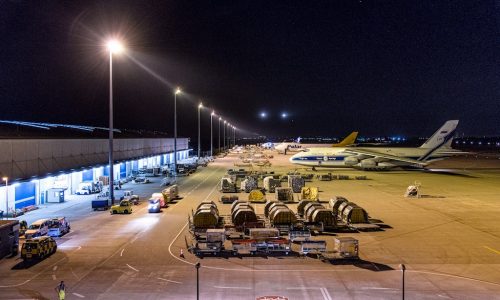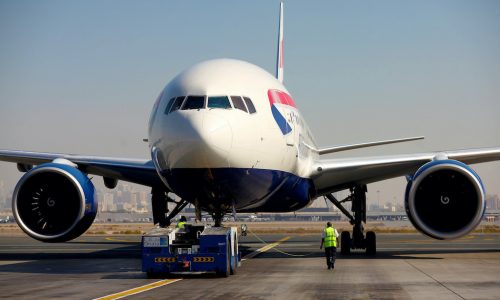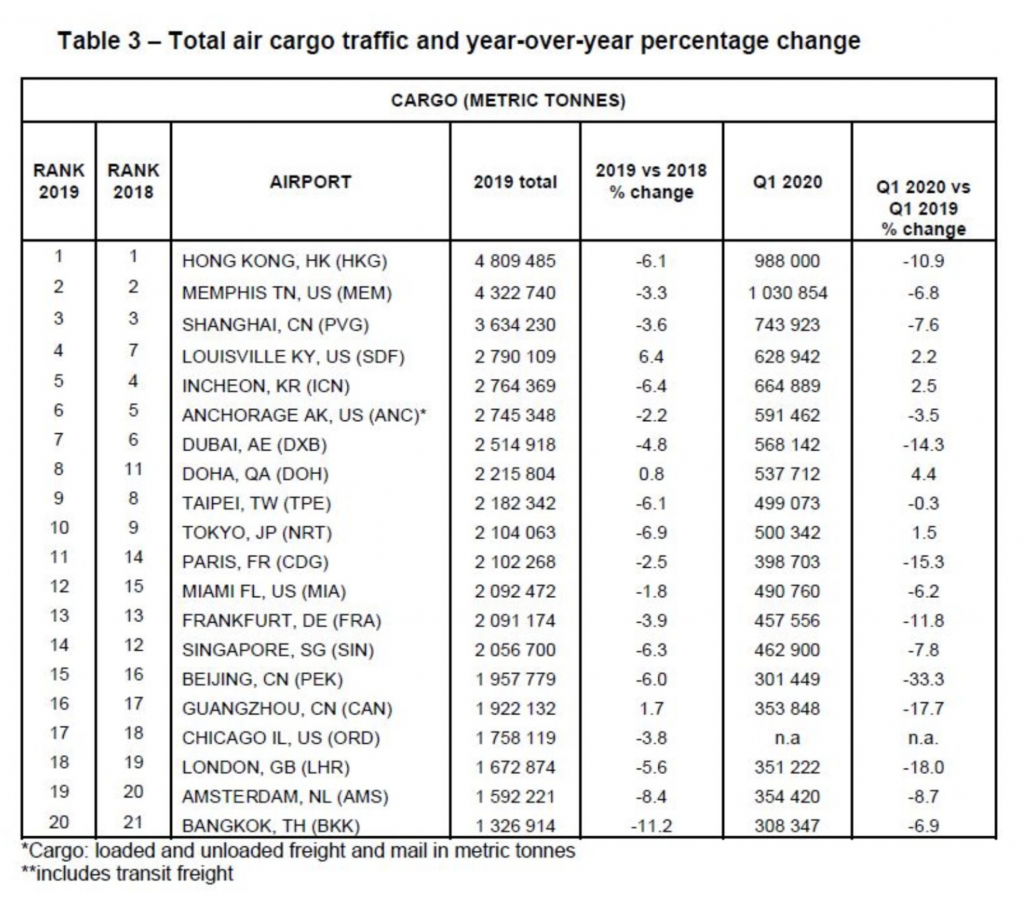
COVID-19’s dramatic effect on global airport passenger and cargo traffic can be glimpsed by the preliminary data from Airports Council International (ACI) World.
Against a challenging global economic backdrop, air cargo volume declined 3.9% at the world’s top 20 airports in 2019 as they handled a combined 48m tonnes.
Hong Kong Airport remains the largest air cargo hub, handling 4.8m tonnes in 2019, but a 6.1% volume decline versus 2018. Hong Kong saw a 10.9% fall in 2020 Q1 volumes versus 2019 due to COVID-19.
Memphis Airport was in second place in 2019 for cargo tonnages and Shanghai Airport came in third. Both those hubs saw declines in the first quarter 2020, down 6.8% and 7.6% respectively.
Louisville Airport and Incheon recorded growth in cargo during the first stages of the COVID-19 outbreak.
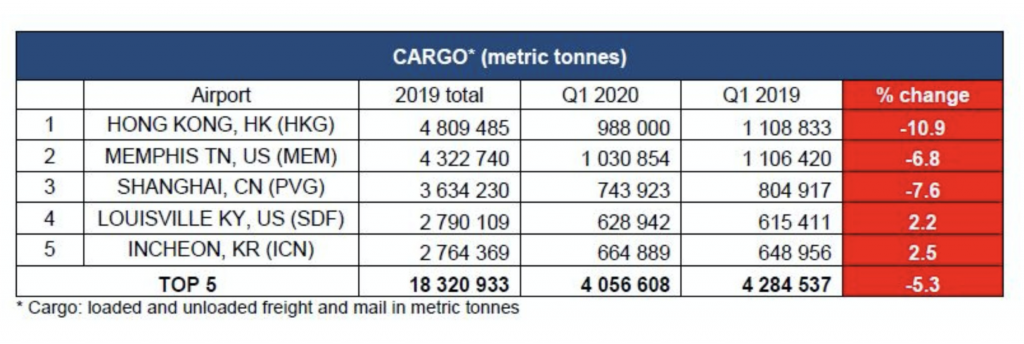
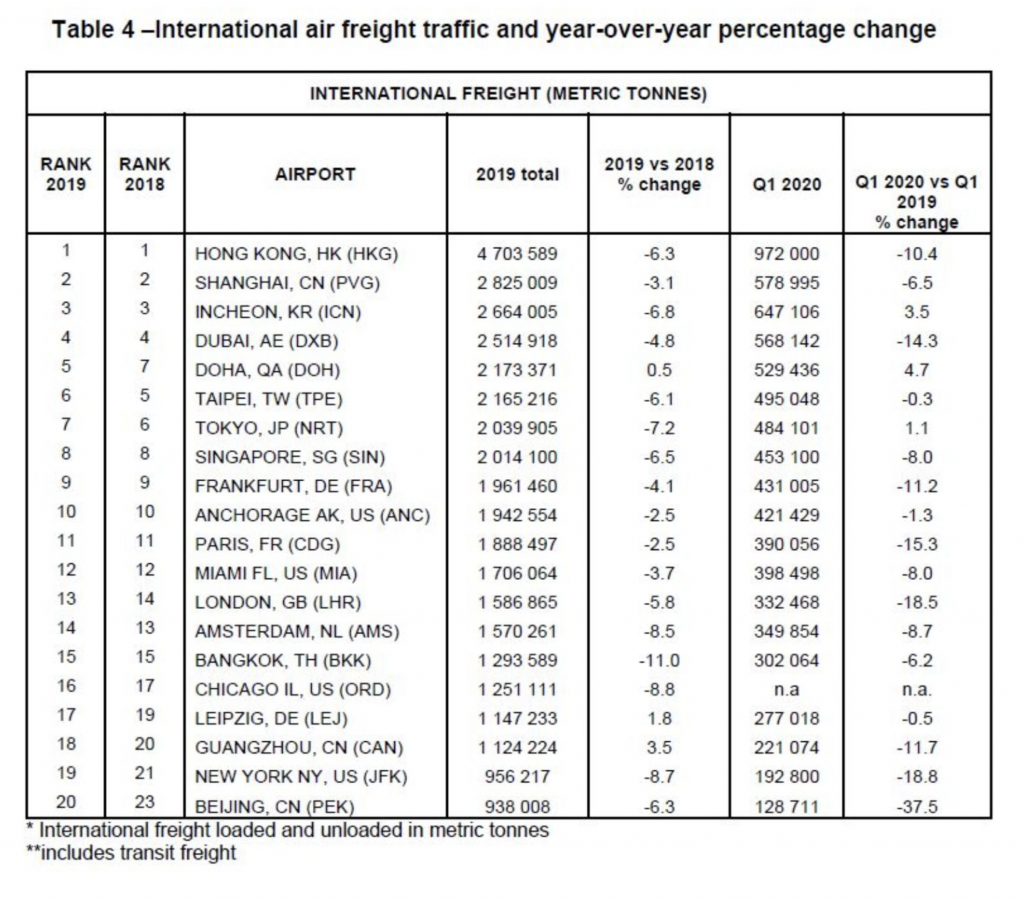
Passenger traffic at the world’s top 20 busiest airports grew by 1.7% in 2019. With more than 1.5bn passengers, representing 17% of global passenger traffic. The effect of the grounding of most passenger aircraft in Q1 2020 can be seen below.
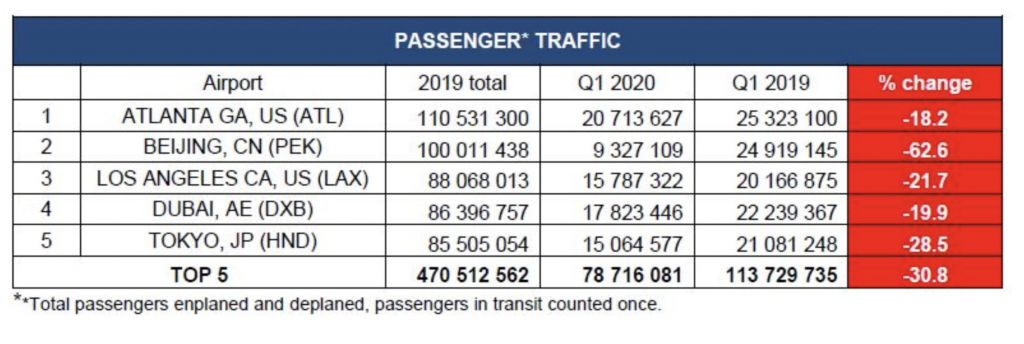
An ACI World spokesperson said that the ongoing COVID-19 crisis has brought airports around the world “to a virtual standstill,” resulting in airport traffic and revenue losses across all regions. ACI World now estimates a reduction of more than 4.6bn passengers and more than $97bn in revenue for 2020.”
The combined 2019 and 2020 data shows the dramatic decline in air travel in the first quarter of 2020. In the top five, Beijing Airport experienced a 62.6% decline in passenger traffic but large decreases were also recorded across other top 20 airports in Asia-Pacific as the COVID-19 outbreak began to take hold in that region.
ACI World Director General Angela Gittens said: “ACI data shows that the outbreak of COVID-19 had a dramatic and immediate impact on the world’s airports and the wider aviation ecosystem.
“From a period of sustained passenger traffic growth in 2019, the industry is now in survival mode, crippled by the loss of passenger traffic and revenues.
“This year will pose major and unprecedented challenges for the industry as the impacts of travel restrictions and lockdown measures introduced in response to the pandemic remain an existential threat to the aviation industry unless governments can provide appropriate relief and assistance.
“Airports are critical in the air transport ecosystem which is a key driver of local, regional and national economies. Financial relief and assistance is urgently needed.”
Aircraft movements grew by 1.5% in 2019 for the top 20 airports. Chicago O’Hare remained the busiest airport in the world for aircraft movements, with Atlanta-Hartsfield-Jackson Airport coming in a close second. Both saw movements decrease in the first quarter of 2020.
